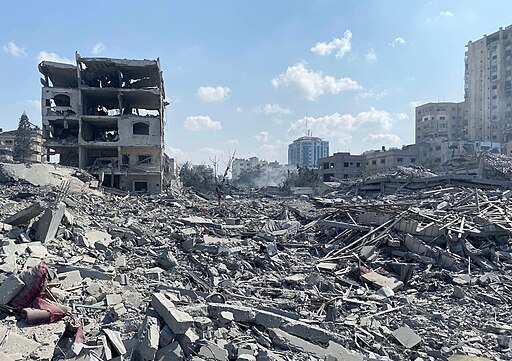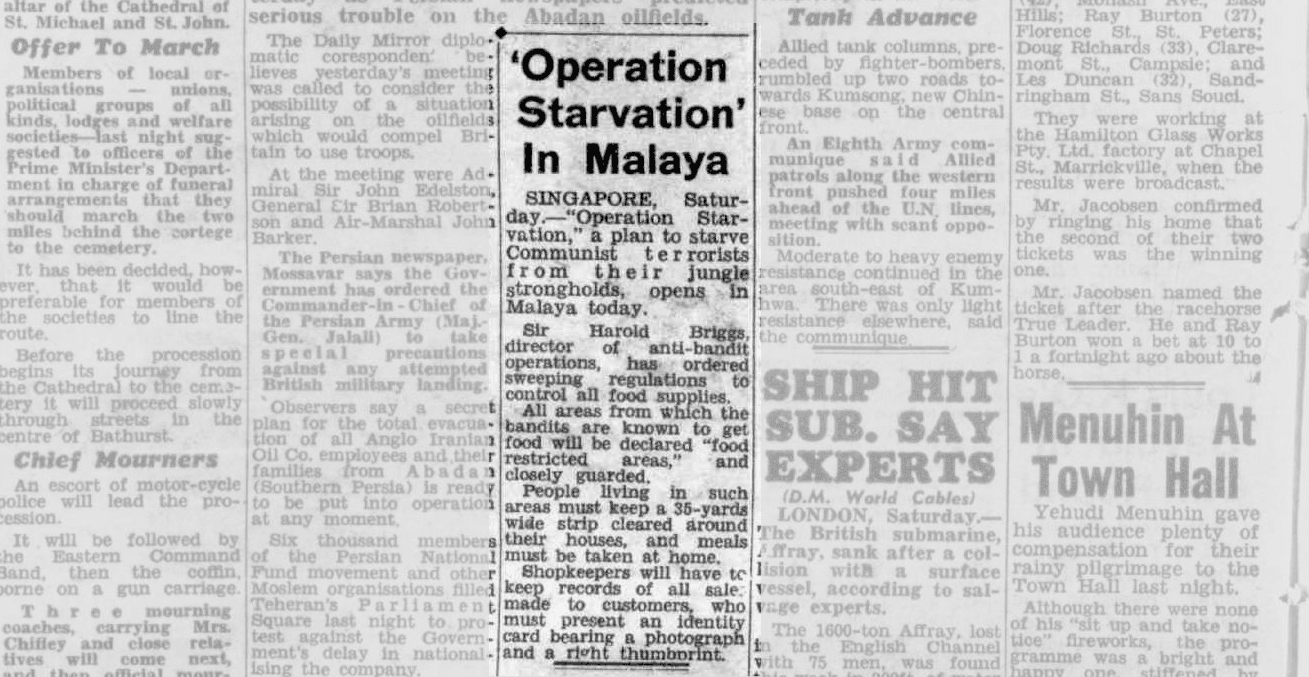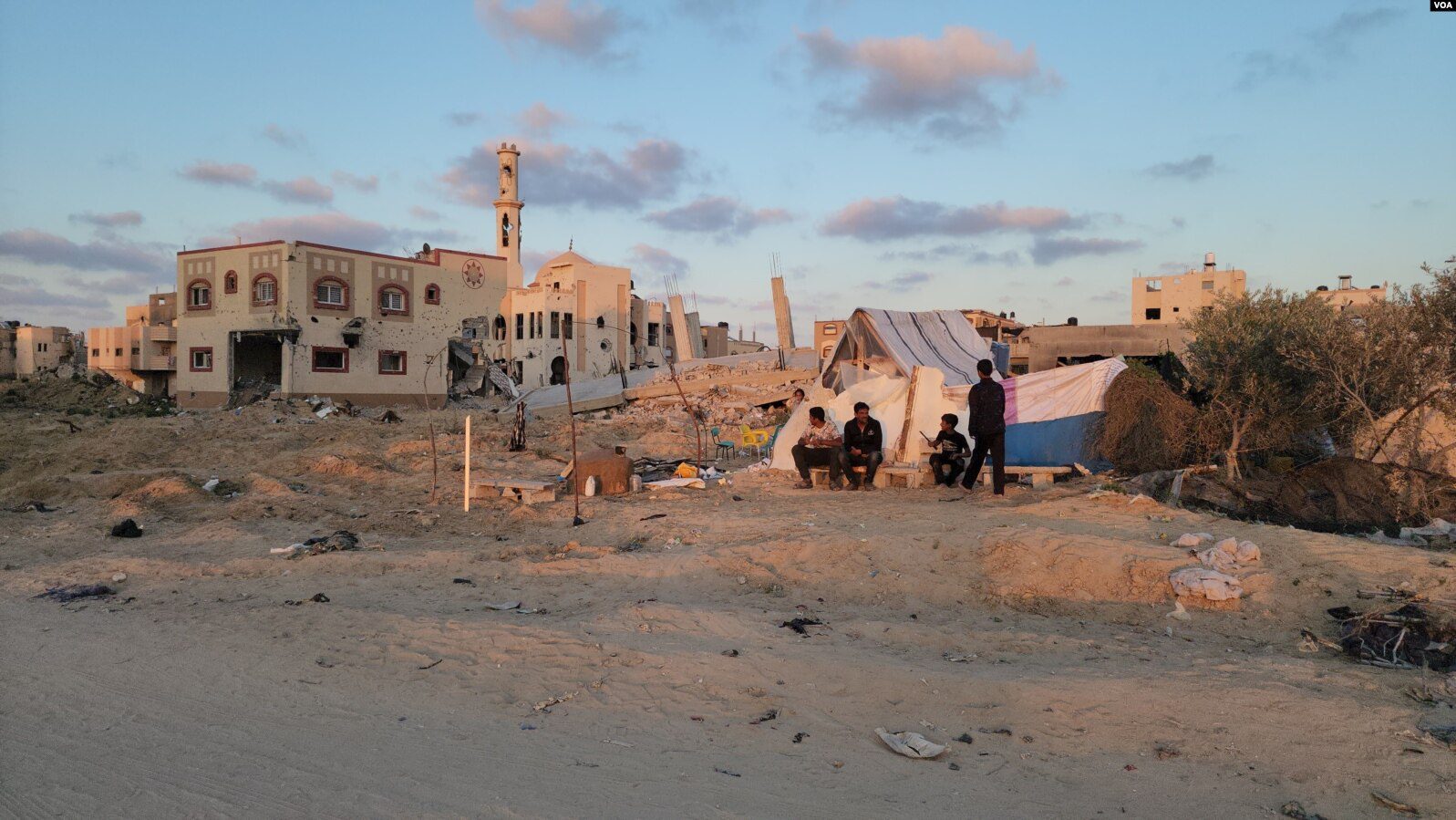The people of Gaza are facing a real prospect of famine. That is the warning of the Famine Review Committee, an independent international mechanism. Without immediate action—stopping the destruction of items indispensable to human survival and providing large-scale relief and essential services—mass mortality from hunger or disease outbreaks is looming.
This blog post puts the famine warning in Gaza in perspective. It refers to two standard metrics for identifying famine and other degrees of food crisis. It outlines how starvation can be a war crime and a famine crime. It provides some historical context.
The catastrophic humanitarian crisis in Gaza is a deliberate act. Gaza is a starvation crime scene.
The Integrated Food Security Phase Classification
The food system in Gaza has collapsed completely (WFP 2023b). The health system has collapsed (WHO 2023). Basic infrastructure for clean water and sanitation has collapsed (Oxfam 2023). The Famine Review Committee (FRC) of the Integrated Food Security Phase Classification (IPC) has found that a significant proportion of the population of Gaza is suffering ‘Catastrophe’ (IPC 2023).
The FRC/IPC is the gold-standard, internationally accepted process and metric for diagnosing and defining food crisis (IPC 2021a). The IPC has five stages of food (in)security: normal, stressed, crisis, emergency and catastrophe/famine. IPC stage 5 (Famine) is said to occur in given area when ‘at least 20% of the population is affected [by stage/phase 5], with about one out of three children being acutely malnourished and two people dying per day for every 10,000 inhabitants due to outright starvation or to the interaction of malnutrition and disease.’ The IPC determines a population to be in stage 5 (Catastrophe) when some but not all these three indicators have reached those thresholds.
The most recent FRC analysis of Gaza, dated December 21, and based on data referring to the analysis period of November 24-December 8, identifies ‘Catastrophe’ for the existing situation (‘current’) and a warning of famine for the coming months (‘projected’) (IPC 2023),
For the current period, the FRC concluded that the estimations of the population in Catastrophe (IPC Phase 5) by the IPC Analysis Team, 25% in the Northern Governorates, 15% for the Southern Governorate IDPs [internally displaced persons], and 10% for the Southern Governorate Residents, are plausible.
For the projection period, the FRC concluded that the estimations of the population in Catastrophe (IPC Phase 5) by the IPC analysis team, 30% in the Northern Governorates and 25% for the Southern Governorate IDPs, are plausible. However, the FRC considers these estimates to be conservative and that the prevalence of Catastrophe (IPC Phase 5) is likely to be higher in both units of analysis.
To make a ‘Famine’ determination, the FRC would have needed to see the levels of child malnutrition and mortality passing the respective thresholds. The ‘Catastrophe’ finding indicates that they are not yet at those levels.
The ’current’ catastrophe is limited to the Northern Governorate but the FRC is clear that the whole of Gaza is expected to be in these conditions very soon. The ‘projected’ period covers December 9, 2023 to February 2024. I.e., we are already mid-way into this period.
Table: FRC Figures
| Population | Phase 1 | Phase 2 | Phase 3 | Phase 4 | Phase 5 | |
| ‘Current’ | 2,226,544 | 0 | 144,700 7% | 766,000 34% | 938,600 42% | 377,800 17% |
| ‘Projected’ | 2,226,544 | 0 | 2,500 0% | 477,800 21% | 1,169,600 53% | 576,600 26% |
Estimated Excess Mortality
A second way of diagnosing and defining famine is by the number of excess deaths attributable to hunger and related causes. A ‘great’ famine is one in which 100,000 or more people die and a ‘major’ famine has a threshold of 10,000 excess deaths (Howe and Devereux 2004). This is useful for historical famines but is not so for food crises as they unfold.
Save the Children has warned that deaths due to starvation and related causes might soon exceed the approximately 20,000 fatalities directly caused by the military onslaught (Save the Children 2023). This is based upon a raft of evidence from, among others, UNICEF (2023) and WFP (2023a). Families are often going one, two or three days without food. Infectious diseases, which are often the proximate cause of death among malnourished people, are spreading (WHO 2023). Nearly 70% of the housing stock is estimated to have been destroyed or damaged (Wall Street Journal 2023). Few have access to clean drinking water and fewer still to toilets. The risk of outbreaks of waterborne and other infectious diseases is very high (Action for Humanity 2023). We should note that in many situations of humanitarian crisis, it is such disease outbreaks that kill the most, even without the threshold of ‘famine’ being breached. In such situations, most of those who suffer are young children and the elderly.
If the catastrophe continues on its current trajectory, the prediction of mass death from disease, hunger and exposure will come to pass.
If humanitarian assistance is provided promptly and at scale, deaths from hunger and disease will stabilize and decline, but they will invariably take some time to return to pre-crisis baseline levels. Even if there were to be an immediate cessation of hostilities and delivery of emergency aid, along with efforts to restore water, sanitation and health services, mortality would remain elevated for weeks or months. As Save the Children observes, this makes a ‘major’ famine, according to the definition of 10,000 or more deaths, very probable, if it is not already happening.
A ‘great’ famine, with 100,000 or more excess deaths, may be in prospect if the current level of hostilities and destruction continues.
The War Crime of Starvation
The war crime of starvation is defined in the Rome Statute of the International Criminal Court (Article 8(2)(b)(xxv)) as ‘Intentionally using starvation of civilians as a method of warfare by depriving them of objects indispensable to their survival, including wilfully impeding relief supplies as provided for under the Geneva Conventions.’ (ICC 1998). Note two important points. First, ‘objects indispensable to survival’ (OIS) include not only food but also water, medicine, shelter, and maternal care for children. Second, there is no requirement that individuals perish of starvation for the crime to have been committed; it is sufficient for them to have been deprived of OIS.
This and related prohibitions are applicable to Israel’s military actions in Gaza (Dannenbaum 2023). Human Rights Watch (2023) concluded that Israel’s actions did indeed constitute the war crime of starvation.
Famine Crimes
The creation of famine by political or military action can also be considered a crime against humanity. David Marcus (2003) identified four different degrees of ‘faminogenic behavior’ by governments. First degree is ‘intentional’ infliction of mass starvation, intended to kill en masse. Second degree is ‘recklessness’: ‘Governments implement policies that themselves engender famine, then recklessly continue to pursue these policies despite knowing that they are causing mass starvation.’ The third degree is ‘indifference’, when a government takes no significant action to prevent or ameliorate a famine it has not itself caused. The fourth degree is ‘incompetent’, which is when a government has no capacity (and therefore no criminality is attached).
The majority of modern famines fall into category two, ‘reckless’, with intentional famine relatively rare (de Waal 2017; World Peace Foundation (2017). There are few contemporary cases that qualify as ‘indifference’ and none that are ‘incompetence.’ In other words, when a famine occurs, we have good reason to assume that its cause is political agency. Note that the classification of famine crimes does necessarily require a famine to have been declared, but rather that the ‘faminogenic’ process needs to be underway and at an advanced stage.
The FRC/IPC warning is sufficient reason to analyze the crisis using the lens of famine crimes.
Siege warfare is not in itself unlawful, but can become so under circumstances in disproportionately and systematically deprives civilians of OIS. The siege of Gaza from 2006 onwards is a special and controversial case, in that Israel controlled food, water, medical and electricity supplies almost completely, was rigorous in deciding what commodities would be permitted, while seeking to avoid running afoul of international humanitarian law. Dov Weisglass, an adviser to then Israeli Prime Minister Ehud Olmert summed this up, ‘The idea is to put the Palestinians on a diet, but not to make them die of hunger’ (Urquhart 2006). Legal analysts disagree on Israel’s legal culpability. Rhoda Howard-Hassman (2016) assessed Israel’s blockade and its 2009 military operations, concluding that ‘at minimum, then, in Marcus’ terms, Israel was guilty of indifference… [and] it seems most likely that Israel was guilty of recklessness.’ She also lays blame on Hamas and Egypt for treating Palestinians with ‘reckless indifference’. Diana Kearney (2013) reaches a stronger conclusion, regarding the siege as an ‘archetypical case of persecution,’ and a crime against humanity.
Over the years, the siege caused severe deprivation. According to United Nations figures (UNICEF 2023):
Prior to the current conflict, 64% of households in Gaza Strip were food insecure or vulnerable to food insecurity, with 124,500 young children living in food poverty. … Additionally, before the hostilities began on 7th October, UNRWA reported that over 90% of the water in Gaza had been deemed unfit for human consumption.
This is the background condition under which Gaza was rapidly reduced to catastrophe. The Israeli government will have acted in full knowledge of existing humanitarian conditions and the impacts of any actions it chose to take. Hamas may also be indifferent or reckless but that is not relevant to determining Israel’s responsibility.
There will have been no surprises about the humanitarian outcomes in Gaza today: the Israeli authorities know precisely what they are doing.
On October 9, Minister of Defense Yoav Gallant said, ‘I have ordered a complete siege on the Gaza Strip. There will be no electricity, no food, no fuel, everything is closed.’ (Times of Israel 2023) The tiny amounts of humanitarian assistance subsequently permitted to enter mitigate neither the force of this statement nor its impact.
This is prima facie indication of a first-degree famine crime. Even if a statement such as Gallant’s does not reflect state policy and military strategy, the fact that the campaign has continued without any significant alteration of its methods after the humanitarian impacts have become clear, makes Gaza a second-degree famine crime. Either way, the process of reducing Gaza to a situation in which famine is in prospect is a crime against humanity.
Gaza’s Starvation in Comparative Perspective
The IPC was developed in 2004. According to its processes and criteria, famine was declared in Somalia (FAO & FEWSNET 2011) and South Sudan (IPC 2017). In other cases, including Ethiopia, Nigeria, and Yemen, the FRC has identified widespread IPC level 4 (‘emergency’) conditions and spoken of ‘famine-like conditions’ or warned of impending famine if immediate humanitarian action were not taken. This also applies to Somalia and South Sudan in other years. Famine was not declared in Syria, where the IPC did not collect data. Taking all this into account, it is important to stress that an IPC level 5 (‘catastrophe’) is exceptional and rare. Moreover, crossing an arbitrary threshold into ‘famine’ misses the point that mass suffering and heightened death occurs in situations that fall short of being designated as famine.
In the historical catalogue of famines and incidents of mass starvation (de Waal 2017; World Peace Foundation (2017), it is hard to find a close parallel with the situation in Gaza. Few combine such a comprehensive siege with such comprehensive destruction of OIS.
The absolute numbers of people who will die in Gaza’s catastrophe will not match the great and calamitous famines of the 20th century, solely because the afflicted population is smaller. The proportionate death toll may be comparable.
The rigor, scale and speed of the destruction of OIS and enforcement of the siege surpasses any other case of man-made famine in the last 75 years. Comparisons can be made with forced starvation of Biafra, Nigeria, in 1967-70, the siege of Sarajevo from 1992-95, the ‘kneel or starve’ starvation tactics used by the Asad government in Syria, and the starvation crimes perpetrated by the governments of Ethiopia and Eritrea in Tigray in 2020-22.
In a comparative historical typology, Bridget Conley and Alex de Waal (2019) identified nine purposes of starvation for the political and military actors that perpetrate it at scale. These are (i) extermination or genocide; (ii) control through weakening a population; (iii) gaining territorial control; (iv) flushing out a population; (v) punishment; (vi) material extraction or theft; (vii) extreme exploitation; (viii) war provisioning; and (ix) comprehensive societal transformation. For the Government of Israel, the starvation of Gaza undoubtedly conforms to purposes (ii), (iii), (iv) and (v). If some of the statements of intent of senior Israeli politicians are to be taken at face value, and if Israel continues its campaign without respite despite the clear and unequivocal warning of famine, then the categorization of its purpose as (i) may become compelling.
Implications
The IPC’s Famine Review Committee has sounded a clear and unmissable warning.
The FRC considers that the Risk of Famine will increase for each day that the current situation of intense conflict and restricted humanitarian access persists or worsens. The FRC reached technical consensus that there is a Risk of Famine in the projection period through May 2024, if the current situation persists or worsens.
We note that the Famine threshold for Catastrophe (IPC Phase 5) acute food insecurity has already been exceeded. Furthermore, the situation is deteriorating rapidly. The Risk of Famine analysis indicates that the Famine thresholds for both acute malnutrition and non-trauma mortality may also be breached at some point within this timeframe. There was a lack of technical consensus on whether Famine thresholds would be breached before 7 February 2024.
The is a call for action: to stop acts of starvation immediately and provide relief, as required under International Humanitarian Law, to the civilian population.
Our research at the World Peace Foundation additionally finds that starvation of this nature is a crime, and that essential to ending such a crime is accountability. (Conley et al. 2022). The international community should call to account those responsible.
References
Action for Humanity, 2023. ‘Disease is going to take hold in Gaza, thanks to “purposeful dismantling” of heath care,’ December 2.
Conley, Bridget, & Alex de Waal, 2019, ‘The Purposes of Starvation: Historical and Contemporary Uses,’ Journal of International Criminal Justice, 17.4, 699–722.
Conley, Bridget, Alex de Waal, Catriona Murdoch, and Wayne Jordash QC, 2022. Accountability for Mass Starvation: Testing the limits of the law, Oxford University Press.
Dannenbaum, Tom, 2023. ‘The Siege of Gaza and the Starvation War Crime,’ Just Security, October 23.
De Waal, Alex, 2017. Mass Starvation: The history and future of famine, Cambridge, Polity.
FAO and FEWSNET, 2011, ‘Famine in Southern Somalia: Evidence for a declaration,’ Nairobi, July 19.
Howard Hassman, Rhoda, 2016. State Food Crimes. Cambridge, Cambridge University Press.
Howe, Paul, & Stephen Devereux, 2004. ‘Famine Intensity and Magnitude Scales: A Proposal for an Instrumental Definition of Famine,’ Disasters 28.4, 353-372.
Human Rights Watch, 2023. ‘Israel: Starvation Used as Weapon of War in Gaza,’ December 18.
ICC (International Criminal Court), 1998, ‘Rome Statute of the International Criminal Court,’ The Hague.
IPC (Integrated Food Security Phase Classification), 2017. ‘South Sudan – Localized famine and unprecedented levels of acute malnutrition in Greater Unity.’ February.
IPC (Integrated Food Security Phase Classification), 2021a. ‘Technical Manual Version 3.1.’ Rome.
IPC (Integrated Food Security Phase Classification), 2021b. ‘Ethiopia: Famine Review Committee confirms very high levels of acute food insecurity and Risk of Famine in Tigray.’ Rome, July.
IPC (Integrated Food Security Phase Classification), 2023. ‘Gaza Strip: Famine Review of the IPC Analysis,’ December 21.
Kearney, Diana, 2013. ‘Food Deprivations as Crimes against Humanity,’ NYU Journal of International Law and Politics, 46,253-289.
Marcus, David, 2003. ‘Famine Crimes in International Law.’ American Journal of International Law, 97, 245-281.
Oxfam, 2023. ‘The Unfolding Water Catastrophe in Gaza’, November 10.
Save the Children, 2023. ‘Deaths by starvation and disease may top deaths by bombs as families squeezed into deadly “safe zones”, two months into Gaza crisis,’ December 9.
Times of Israel, 2023, ‘Defense minister announces “complete siege” of Gaza: No power, food or fuel,’ October 9.
UNICEF, 2023. ‘Child deaths in the Gaza strip due to disease and malnutrition can and must be prevented,’ Press Release, December 3.
Urquhart, Conal, 2006. ‘Gaza on brink of implosion as aid cut-off starts to bite,’ The Guardian, 15 April,
Wall Street Journal, 2023. ‘The Ruined Landscape of Gaza After Nearly Three Months of Bombing.’ December 30,
WFP (World Food Programme), 2023a, ‘2023 – WFP Palestine – Monthly market dashboard,’ Rome, November 18.
WFP (World Food Programme), 2023b. ‘Gaza – Food Security Assessment – December 2023,’ Rome, December 14.
WHO (World Health Organization), 2023. ‘Lethal combination of hunger and disease to lead to more deaths in Gaza.’ December 21.
World Peace Foundation, nd., ‘Famine trends dataset, tables and graphs,’ Somerville MA, World Peace Foundation.
Photo: Palestinian News & Information Agency (Wafa) in contract with APAimages, CC BY-SA 3.0 https://creativecommons.org/licenses/by-sa/3.0, via Wikimedia Commons



